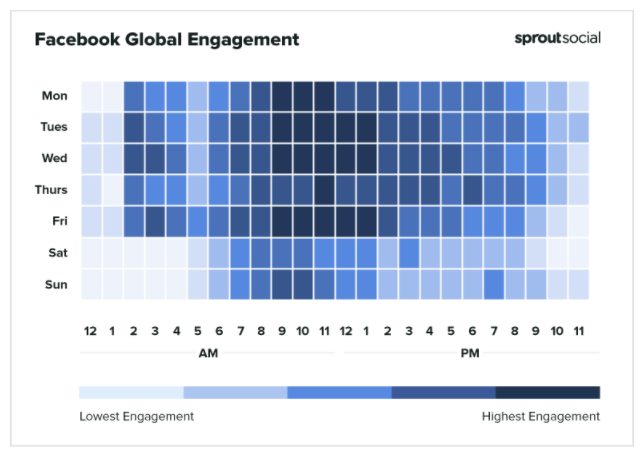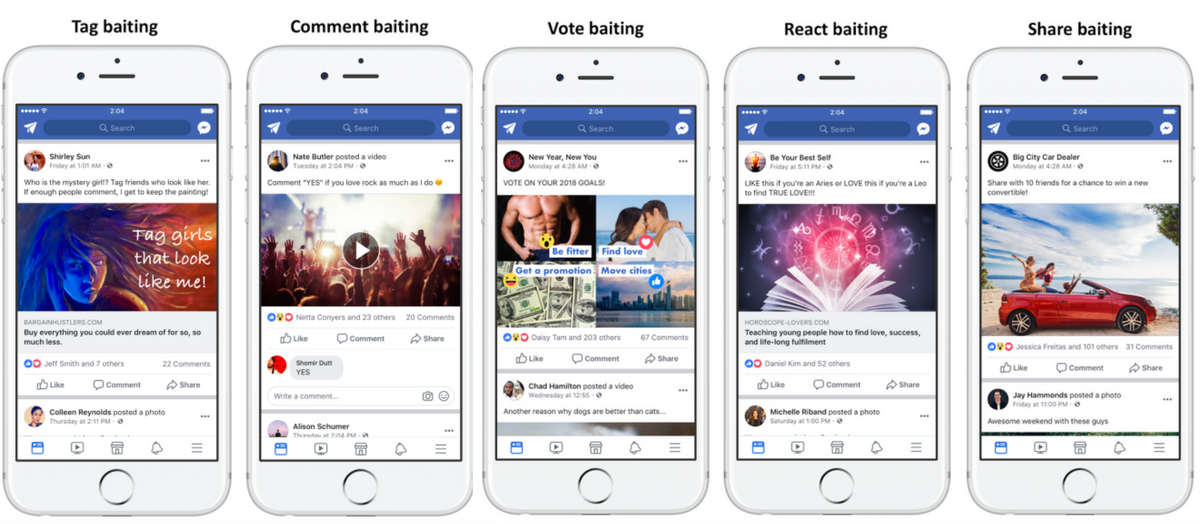Algorithms can often be the cause of many headaches for marketers and brands. Just when you thought you had your strategy locked in, the algorithm changes, and you’re left scratching your head, wondering what to do next.
Facebook is no exception here. The social giant loves to change things up, and you need to be ready to shift your strategy when that happens.
An algorithm is a compilation of rules and data that make decisions about what users want to see on the platform. Each social media site creates unique algorithms for every person who uses the site, meaning no two people will have the same social media news feed. The ultimate goal is to keep users within the platform and scrolling through posts for as long as it can.
To give your Facebook strategy the best chance of success, you’ll want to understand how Facebook prioritizes, scores, and displays content to its users. Let’s take a look at how the algorithm works at its most basic level, so you have the foundation you need to get your content seen.

Facebook uses an algorithm to rank content by a number of factors:
- Inventory
- Engagement
- Relationships
- Recency
Inventory, as the term suggests, refers to all the content Facebook is looking at to help decide what to show your audience, whether it’s posts from their friends, family, groups they’ve joined, or Pages they’ve liked.
Engagement includes things like comments, likes, and shares that Facebook uses to choose which content gets shown. Facebook weighs some of these more than others. For example, likes, shares, comments, and overall engagement are weighted more heavily than little things like what type of phone a user is on, or how fast their internet connection is at the time to help the algorithm rank content.
Relationships are also important. Who shared the post and your connection to them will be a significant factor in how often you’ll see their content. This is influenced by tagged photos, engagement, and even how often you direct message them. Interactions between people and Pages do not have the same weight as relationships between people.
Recency is next. How recently was a post published? What time is the user seeing the post? The type of phone a person is using and the speed of the internet connection factors in here. This impacts when you’ll see a post in your news feed, with new posts being prioritized.
The algorithm then uses these signals to make predictions. Facebook looks at a user’s previous behavior and profile data to show content they’re most likely to interact with. For example, if a user consistently posts about movies and engages with content related to movies, Facebook will take note and prioritize movie-related content in that user’s feed.
The algorithm also attributes a score to each post based on those predictions. A score is a number given to a post that indicates how relevant that post is to a user. Each post will have a different score unique to each user, and the algorithm will serve up those posts in a user’s news feed according to that score.
The higher the score, the more likely the content will be shown in the news feed. Facebook does this for each user and each piece of content.
Mari Smith, premier Facebook marketing expert tells us that “Facebook definitely prioritizes engagement in the newsfeed. And guess what? Comments have more weight in the algorithms than just a reaction. The more you can get your audience replying, engaging, and responding with more than five words, if possible, in their comments back to you, and also creating multiple threads, that helps spark engagement. You want to have audience members talking to one another — that can really help you get a bit more lift in the newsfeed. Shares are also important. I love shares, because a share on Facebook is, basically, like a retweet on Twitter. The more engagement you can get on your posts, the better. Speed also matters. The quicker people respond, the better reach you will get in the feed as well.“
Let’s take a look at a high-scoring example from Tasty – the brand owned by BuzzFeed that creates short videos about making tasty food items.

Let’s say, Jada, a regular Facebook user, has a friend who posts a video from Tasty about a new recipe. Jada comments on the post, which then grabs the attention of other friends, who also begin to comment, like, and share.
Jada’s spouse then sends her the very same recipe link through Facebook Messenger, suggesting they try the recipe themselves for dinner. The Facebook algorithm sees these interactions and will give a high score to this content because it “thinks” this is something the user will likely interact with. So, the post about Tasty’s recipe appears at the top of the user’s News Feed.
But what about a low-scoring example?
Let’s say a Page Jada hasn’t interacted with in three years posts a deal for a discount of their product. No one shares, comments, or responds to the post except five folks who work at the company. The Page may have a significant amount of fans, but very few, if any, have engaged with the post. Facebook would probably not give this post a high score, so it’s unlikely that it will feature in Jada’s news feed.
It’s clear there are many factors at play when the algorithm decides which content to show. But, there is no factor more important than engagement in your Facebook strategy.
Let’s look at some specific strategies to adapt to Facebook’s algorithm.
- Post video content. Video is more important than ever. And in particular, live video. According to Facebook, live videos, on average, get six times as many interactions as regular videos. The good news is that you don’t even have to spend a ton of money to generate great content. Sometimes all you need is a little creativity and a smartphone. Or, tap into your user base and source content from your users.
- Post at the right time. Facebook recently removed the ability to find out when your audience is online, but there are still other ways that you can get this information. First, check your best-performing posts and determine what days and times have historically worked best for your posts. Next, do some tests. Try posting similar content on different days and times, and track which posts receive the most interest. If you need somewhere to start, Sprout Social took a look at Facebook’s Global Engagement to determine when users are most likely online around the world. They determined the following:
- Best times: Tuesday, Wednesday, and Friday from 9 AM–1 PM.
- Best days: Tuesday, Wednesday, Friday
- Worst day: Saturday

- Posts in Groups and for Events have higher prioritization from Facebook, so think about developing a community where users can engage with each other and where you can seed information about your brand. Just be careful not to be too spammy — people want to engage with brands, not be marketed to by brands. Additionally, posting information about your events on and off Facebook can also help bring more followers to your Page and more reach for your posts.
- Post more Stories. Stories aren’t affected by the algorithm and show up in order at the top of a user’s feed. Facebook Stories has 500 million daily viewers, and they’re an easy way to gain some additional organic reach for your content.
- Consider developing an employee advocacy program. Facebook prioritizes content from friends and family members over posts from companies. When your employees share great content, it can help extend your reach.
- Don’t forget hashtags. Facebook hasn’t traditionally been a platform where hashtags reign, but Facebook has begun implementing recommended tag listings when you’re composing posts. This may give you the ability to rank even better with the algorithm.
- Talk with your audience. Respond to their comments and messages to help your posts appear later in user feeds.
- Try for love, not likes. Facebook is looking at a variety of signals. A big heart will always outweigh that of the blue thumbs up. You want to create amazing content that people really love, not just acknowledge they have seen it and that it’s somewhat interesting.

- Find ways to encourage engagement. Facebook is prioritizing engagement, which means you need to get your users talking. Ask questions, conduct polls, and ask for feedback.


- One thing that you should avoid is “engagement bait.” This is a term that Facebook uses to describe spammy behavior, such as asking for clicks, likes, comments, votes, tags, and shares.

Steer clear of posting misinformation, fake news, posts that feel too much like ads, or have misleading click-throughs to content that isn’t relevant. Not only will this be deprioritized, but it can also lead to your account being locked.
If there’s one thing you should know about the algorithm, it’s that while it’s essential to know how the algorithm works and how it affects your content, more time should be spent focusing on understanding and engaging your target audience, and posting content that is most relevant and exciting to them. Think about what types of content will drive the most engagement from your audience. The algorithm will reward you for it.
If this is a bit overwhelming for you, the good thing is that we are marketing experts, and our team can do all this for you. Focus on your business.



